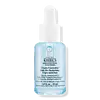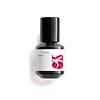What's inside
What's inside
 Key Ingredients
Key Ingredients

 Benefits
Benefits

 Concerns
Concerns

 Ingredients Side-by-side
Ingredients Side-by-side

Water
Skin ConditioningPentylene Glycol
Skin ConditioningGlycerin
HumectantGlycolic Acid
BufferingGluconolactone
Skin ConditioningCentaurea Cyanus Flower Water
Skin ConditioningPropanediol
SolventLactic Acid
BufferingSodium Hydroxide
BufferingPanthenol
Skin ConditioningAllantoin
Skin ConditioningSalicylic Acid
MaskingTrisodium Ethylenediamine Disuccinate
Hydroxyethylcellulose
Emulsion StabilisingCopper Gluconate
Skin ConditioningCoco-Betaine
CleansingCarica Papaya Fruit Extract
Skin ConditioningCitric Acid
BufferingPotassium Sorbate
PreservativeArginine
MaskingDisodium Phosphate
BufferingPolysorbate 60
EmulsifyingSodium Phosphate
BufferingWater, Pentylene Glycol, Glycerin, Glycolic Acid, Gluconolactone, Centaurea Cyanus Flower Water, Propanediol, Lactic Acid, Sodium Hydroxide, Panthenol, Allantoin, Salicylic Acid, Trisodium Ethylenediamine Disuccinate, Hydroxyethylcellulose, Copper Gluconate, Coco-Betaine, Carica Papaya Fruit Extract, Citric Acid, Potassium Sorbate, Arginine, Disodium Phosphate, Polysorbate 60, Sodium Phosphate
Water
Skin ConditioningEthoxydiglycol
HumectantVaccinium Myrtillus Fruit Extract
Skin ConditioningDimethyl Isosorbide
SolventSalicylic Acid
MaskingLactic Acid
BufferingSaccharum Officinarum Extract
MoisturisingGlycerin
HumectantCitrus Aurantium Dulcis Fruit Extract
MaskingCitrus Limon Fruit Extract
MaskingSodium Levulinate
Skin ConditioningAcer Saccharum Extract
Skin ConditioningDiutan Gum
Melaleuca Alternifolia Leaf
AbrasiveSodium Anisate
AntimicrobialMentha Australis Leaf Extract
Skin ConditioningButylene Glycol
HumectantSantalum Spicatum Seed Oil
Skin ConditioningCitrus Aurantium Dulcis Oil
MaskingCitrus Aurantium Bergamia Leaf Oil
AstringentJuniperus Mexicana Oil
MaskingPelargonium Graveolens Oil
MaskingCitrus Aurantium Amara Flower Oil
MaskingEugenia Caryophyllus Leaf Oil
MaskingCitrus Aurantium Bergamia Fruit Oil
MaskingCitrus Grandis Peel Oil
MaskingCitrus Limon Peel Oil
MaskingLitsea Cubeba Fruit Oil
MaskingPentylene Glycol
Skin ConditioningMagnesium Aspartate
Skin ConditioningZinc Gluconate
Skin ConditioningCitrus Australasica Fruit Extract
AntioxidantSodium Benzoate
MaskingCitric Acid
BufferingCopper Gluconate
Skin ConditioningPotassium Sorbate
PreservativeGlycine
BufferingSerine
MaskingGlutamic Acid
HumectantAspartic Acid
MaskingLeucine
Skin ConditioningAlanine
MaskingLysine
Skin ConditioningArginine
MaskingTyrosine
MaskingPhenylalanine
MaskingProline
Skin ConditioningThreonine
Valine
MaskingIsoleucine
Skin ConditioningHistidine
HumectantLimonene
PerfumingCitral
PerfumingLinalool
PerfumingCitronellol
PerfumingWater, Ethoxydiglycol, Vaccinium Myrtillus Fruit Extract, Dimethyl Isosorbide, Salicylic Acid, Lactic Acid, Saccharum Officinarum Extract, Glycerin, Citrus Aurantium Dulcis Fruit Extract, Citrus Limon Fruit Extract, Sodium Levulinate, Acer Saccharum Extract, Diutan Gum, Melaleuca Alternifolia Leaf, Sodium Anisate, Mentha Australis Leaf Extract, Butylene Glycol, Santalum Spicatum Seed Oil, Citrus Aurantium Dulcis Oil, Citrus Aurantium Bergamia Leaf Oil, Juniperus Mexicana Oil, Pelargonium Graveolens Oil, Citrus Aurantium Amara Flower Oil, Eugenia Caryophyllus Leaf Oil, Citrus Aurantium Bergamia Fruit Oil, Citrus Grandis Peel Oil, Citrus Limon Peel Oil, Litsea Cubeba Fruit Oil, Pentylene Glycol, Magnesium Aspartate, Zinc Gluconate, Citrus Australasica Fruit Extract, Sodium Benzoate, Citric Acid, Copper Gluconate, Potassium Sorbate, Glycine, Serine, Glutamic Acid, Aspartic Acid, Leucine, Alanine, Lysine, Arginine, Tyrosine, Phenylalanine, Proline, Threonine, Valine, Isoleucine, Histidine, Limonene, Citral, Linalool, Citronellol
 Reviews
Reviews

Ingredients Explained
These ingredients are found in both products.
Ingredients higher up in an ingredient list are typically present in a larger amount.
Arginine is an amino acid that is important for human development. Your body uses is it to produce hair keratin and skin collagen.
As a cosmetic ingredient, Arginine has antioxidant properties and can also help repair damaged skin. This ingredient is derived either synthetically or from animals.
Arginine isn't fungal acne safe when used in the presence of other lipids (fats, fatty acids, oils, esters, etc). Oils and fats occur naturally within the skin, so take caution when using Arginine if you're prone to fungal acne.
Learn more about ArginineCitric Acid is an alpha hydroxy acid (AHA) naturally found in citrus fruits like oranges, lemons, and limes.
Like other AHAs, citric acid can exfoliate skin by breaking down the bonds that hold dead skin cells together. This helps reveal smoother and brighter skin underneath.
However, this exfoliating effect only happens at high concentrations (20%) which can be hard to find in cosmetic products.
Due to this, citric acid is usually included in small amounts as a pH adjuster. This helps keep products slightly more acidic and compatible with skin's natural pH.
In skincare formulas, citric acid can:
While it can provide some skin benefits, research shows lactic acid and glycolic acid are generally more effective and less irritating exfoliants.
Most citric acid used in skincare today is made by fermenting sugars (usually from molasses). This synthetic version is identical to the natural citrus form but easier to stabilize and use in formulations.
Read more about some other popular AHA's here:
Learn more about Citric AcidThis ingredient is a copper salt known for its wound healing properties.
Our bodies use copper to help stabilize our skin's collagen and elastin. Its also an essential for superoxide dismutase, an enzyme with strong antioxidant properties.
Copper has wound healing properties due to its role in creating new blood vessels and tissue repair.
Learn more about Copper GluconateGlycerin is already naturally found in your skin. It helps moisturize and protect your skin.
A study from 2016 found glycerin to be more effective as a humectant than AHAs and hyaluronic acid.
As a humectant, it helps the skin stay hydrated by pulling moisture to your skin. The low molecular weight of glycerin allows it to pull moisture into the deeper layers of your skin.
Hydrated skin improves your skin barrier; Your skin barrier helps protect against irritants and bacteria.
Glycerin has also been found to have antimicrobial and antiviral properties. Due to these properties, glycerin is often used in wound and burn treatments.
In cosmetics, glycerin is usually derived from plants such as soybean or palm. However, it can also be sourced from animals, such as tallow or animal fat.
This ingredient is organic, colorless, odorless, and non-toxic.
Glycerin is the name for this ingredient in American English. British English uses Glycerol/Glycerine.
Learn more about GlycerinLactic Acid is another well-loved alpha hydroxy acid (AHA). It is gentler than glycolic acid but still highly effective.
Its main role is to exfoliate the surface of the skin by loosening the “glue” that holds dead skin cells together. Shedding those old cells leads to smoother, softer, and more even-toned skin.
Because lactic acid molecules are larger than glycolic acid, they don’t penetrate as deeply. This means they’re less likely to sting or irritate, making it a great choice for beginners or those with sensitive skin.
Like glycolic acid, it can:
Lactic acid also acts as a humectant (like hyaluronic acid). It can draw water into the skin to improve hydration and also plays a role in the skin's natural moisturizing factor (NMF) in the form of sodium lactate.
Studies show it can boost ceramide production to strengthen the skin barrier and even help balance the skin’s microbiome.
To get results, choose products with a pH between 3-4.
Lower strengths (5-12%) focus on surface exfoliation; higher strengths (12% and up) can reach deeper in the dermis (deeper, supportive layer) to improve skin texture and firmness over time.
Though it was originally derived from milk, most modern lactic acid used in skincare is vegan. It is made through non-dairy fermentation to create a bio-identical and stable form suitable for all formulations.
When lactic acid shows up near the end of an ingredient list, it usually means the brand added just a tiny amount to adjust the product’s pH.
Legend has it that Cleopatra used to bathe in sour milk to help reduce wrinkles.
Lactic acid is truly a gentle multitasker: it exfoliates, hydrates, strengthens, and brightens. It's a great ingredient for giving your skin a smooth, glowing, and healthy look without the harshness of stronger acids.
Read more about some other popular AHA's here:
Learn more about Lactic AcidPentylene glycol is typically used within a product to thicken it. It also adds a smooth, soft, and moisturizing feel to the product. It is naturally found in plants such as sugar beets.
The hydrophilic trait of Pentylene Glycol makes it a humectant. As a humectant, Pentylene Glycol helps draw moisture from the air to your skin. This can help keep your skin hydrated.
This property also makes Pentylene Glycol a great texture enhancer. It can also help thicken or stabilize a product.
Pentylene Glycol also acts as a mild preservative and helps to keep a product microbe-free.
Some people may experience mild eye and skin irritation from Pentylene Glycol. We always recommend speaking with a professional about using this ingredient in your routine.
Pentylene Glycol has a low molecular weight and is part of the 1,2-glycol family.
Learn more about Pentylene GlycolPotassium Sorbate is a preservative used to prevent yeast and mold in products. It is commonly found in both cosmetic and food products.
This ingredient comes from potassium salt derived from sorbic acid. Sorbic acid is a natural antibiotic and effective against fungus.
Both potassium sorbate and sorbic acid can be found in baked goods, cheeses, dried meats, dried fruit, ice cream, pickles, wine, yogurt, and more.
You'll often find this ingredient used with other preservatives.
Learn more about Potassium SorbateSalicylic Acid (also known as beta hydroxy acid or BHA) is a well-known ingredient for treating skin that struggles with acne and clogged pores. It exfoliates both the skin's surface and deep within the pores to help clear out buildup, control oil, and reduce inflammation.
Unlike AHAs (alpha hydroxy acids), salicylic acid is oil-soluble. This allows it to penetrate into pores which makes it especially effective for treating blackheads and preventing future breakouts.
Salicylic acid is also known for its soothing properties. It has a similar structure to aspirin and can calm inflamed or irritated skin, making it a good option for acne-prone skin that is also sensitive.
Concentrations of 0.5-2% are recognized by the U.S. FDA as an over-the-counter topical acne product.
It can cause irritation and/or dryness if one's skin already has a compromised moisture barrier, so it's best to focus on repairing that before introducing this ingredient into your routine.
While salicylic acid does not increase sun sensitivity, it’s still important to wear sunscreen daily to protect your skin.
If you are looking for the ingredient called BHA or Butylated Hydroxyanisole, click here.
Learn more about Salicylic AcidWater. It's the most common cosmetic ingredient of all. You'll usually see it at the top of ingredient lists, meaning that it makes up the largest part of the product.
So why is it so popular? Water most often acts as a solvent - this means that it helps dissolve other ingredients into the formulation.
You'll also recognize water as that liquid we all need to stay alive. If you see this, drink a glass of water. Stay hydrated!
Learn more about Water